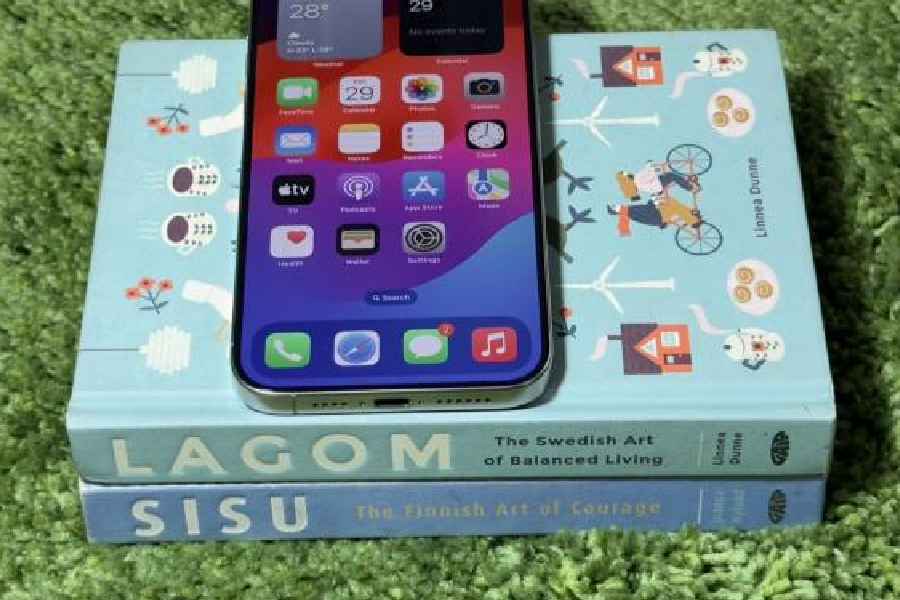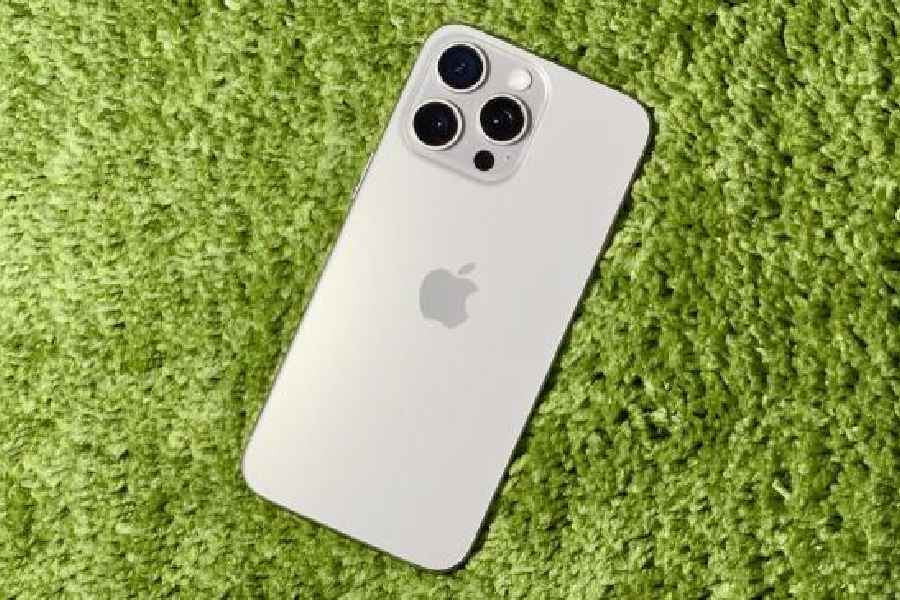In 1838, Charles Darwin had to make an important decision. Should he get married? His method is recognisable to many of us today: The man made a list of pros and cons. At the end of the day, it was about the choices he had. And that in a way forms the foundation of the device the world is talking about and will perhaps become the biggest seller this festive season — the iPhone 15 Pro Max. There are too many pros that make the phone a success.
What Apple has given users this time is plenty of choice. The Action button lets you define what behaviour is most important to you, seven pro lenses give you plenty of options to choose from, USB-C lets you choose how you want to save heavy video files…. Choices are critical in a mature technology product like the iPhone.

It's not about taking bright photos when twilight sets in; it's about getting the colour science right Picture: t2ONLINE
Instead of looking at every aspect of the phone, I am going to zoom in on one — the camera system on the iPhone 15 Pro Max.
Call to action

The 5x zoom on the iPhone 15 Pro Max makes use of multiple prisms and some clever engineering Picture: t2ONLINE
Before going into the camera setup and what’s possible, a few words on another big tool that will indirectly help photographers, especially street photographers. The Action button is new to the Pro models. Earlier, the little button above the volume keys was the mute switch that had been on every iPhone since the very first one. Action button is programmable. By default, the button acts like it did earlier — mute switch. In the iPhone’s Settings app, you can change it to do a handful of other things, like turning on the flashlight, launching the camera, or toggling Do Not Disturb. And you can pair it with Apple’s programmable Shortcuts app, which opens up a world of opportunities.
As an enthusiastic amateur photographer, I like the fact that I can set it up to start and stop video recording; I can use it to bring up the camera module. All this helps shave off a few seconds to begin shooting, allowing the user to capture blink-and-miss moments.
Seven helpers
To set the stage, the iPhone 15 Pro Max comes with the equivalent of seven pro lenses. You get macro, 13mm ultra-wide f/2.2, 24mm f/1.78 main camera, a 28mm and 35mm FOV shift from that main camera, the 2x 48mm equivalent FOV from the previous iPhone, and finally either 77mm f/2.8 on the iPhone 15 Pro or the new 120mm f/2.8 which comes only on the iPhone 15 Pro Max.

When you use the new iPhone, it's the USB-C life
Let’s talk about resolution and there is an interesting difference. Earlier, unless you were shooting Apple ProRaw files at 48MP, you were getting 12MP output out of the main camera. Now what we’re getting out of the main camera is actually an option to shoot 24MP and the company is doing something interesting to get this 24MP resolution. Apple is still doing their smart HDR, combining of multiple photos at 12MP output but they are also combining that with a 48MP resolution shot. That’s how they’re getting this 24MP output. The other important thing is you don’t just have to shoot Apple ProRaw; you can also now shoot 48MP HEIF files with 4x more resolution. All this is propped by Apple’s new A17 Pro processor.
One noticeable change is when you are shooting videos (and photos). There is a new coating on the lenses that helps greatly with lens flare; large flare rings that were visible in the previous generation have reduced a lot. This also translates into the photography aspect and it’s great to see the different ways the new iPhone handles the chromatic part of strong light flares. For the most part, there is improvement in the way the phone handles light reflection. At night, pictures are drastically sharper.
Focus, whenever you want to
On the new iPhone 15s, there is a brand new feature. You don’t have to go into portrait mode to create depth maps and then apply an artificial bokeh. What you can do now is just take a picture and if you see a little ‘f’ symbol at the bottom, it tells you that the camera is detecting portraits and then actually save depth maps automatically even if you’re not in portrait mode. What’s great now is that you can choose, after taking a picture, whether you want to apply the portrait effect or not. Previously, if you shot in portrait mode, you could choose not to use the portrait mode afterwards but here you don’t have to make any of those choices. If you take a picture and at any later date it’s got portrait detection in there, you can prefer to have a softer background. Further, you can also choose between different areas that you want to have in focus. Say two people are in a frame or a pet, you can manually switch the focus later… as many times as you want.

When shooting videos with 5x zoom, you will notice a substantial improvement in stablisation
Tetraprism magic is a triumph
Apple has introduced a new camera this year in the 5x 120mm equivalent tetraprism enabled zoom. It’s a triumph. Built into the same size lens as the other cameras and utilising a clever tetraprism that bounces light around inside the casing of your phone, the lens delivers incredible image quality in both photos and videos. It’s a huge new tool in the iPhone photography kit and it blew me away. The ability to reach out to grab detail previously not possible, or to have a tight framing, or to enhance the emotive quality of my images is both surprising and welcome. Though the wide lenses are much improved as well, the new lens stands out with its ability to isolate and craft frames quickly on the fly. It’s going to make you a better photographer and it’s going to do it automatically.
You may wonder about 40x or 50x zoom on some rival phones. Frankly, at 50x you don’t get the stablisation that you need to capture footage and second, photo quality is mostly rubbish.
The filmmaker in you
What the iPhone has done, over the years, is bring out the filmmaker in us. Most of us will not go out into the open and spend months making something that Steven Spielberg will be proud of but we certainly can explore the medium better than we have ever done with the iPhone 15 Pro Max.
Many of us have this pipe dream of being able to shoot actual projects directly on our phones without making compromises. The reason amateur filmmakers are excited about the iPhone 15 Pro is that it promises to eliminate major compromises that need to be made when choosing to shoot a project on a phone.
Consider the situation: You want to make a short film on a limited budget, time and manpower. In other words, consider two people shooting an entire day to make a short film with a couple of iPhones. One needs to be nimble but, at the same time, the film has to be dynamic and cinematic.
This brings us to shooting in the best quality possible which on the iPhone would be ProRes, a compressed video format, or codec, designed to produce high-quality, high-performance files for video production. These files are extremely large. Second, shoot in Log format to have maximum flexibility in post-production.
We’ve, of course, had the ability to shoot ProRes Log for a while now using third-party apps like Filmic Pro and Cinema P3 and with those you can get great results but now with Apple’s version of Log, it’s the closest Log I’ve seen to a traditional camera.
Log is a flat profile where you utilise the entire dynamic range of a camera so that you can colour correct and colour grade in post-production. If you’re using just a normal video without that dynamic range, without that flat profile, it’s going to be hard to, for example, fix the sky because it’s overexposed. If you shoot in Log, you will have all the data to play with on your computer, like you could be able to bring down the tones in the sky or bring up the shadows.
When you record in log mode, your camera is able to offer a much wider dynamic range or difference between the darkest and brightest details that can be recorded. It essentially uses a logarithmic curve to compress those colours into a smaller part of the 10 bits of data. Then you have extra bits to define the even brighter colours that would have just appeared white with normal footage. You can use LUTs (or Look-up Table), which are preset files that apply a specific colour grading to your video clips, giving them a certain mood, style, or aesthetic.
Given the stablisation on the camera, I am managing to shoot footage handheld and in the middle of the day, which is not an ideal time for lighting and I do not use a neutral-density or ND filter. Yet, the final output is darn good. The footage has a more organic, softer feel and not the often harsh and over-sharpened images you typically see from a phone.
Since ProRes Log results in heavy files, the new USB controller enables USB 3 speeds on iPhone for the first time, now supporting much higher transfer speeds and video output up to 4K at 60 fps HDR. Grab the phone, plug in an external hard drive to the phone itself and then save all the heavy footage there.
Should you buy it?
We are living in an era when every other smartphone manufacturer is selling a flagship phone but most of these are simply expensive devices and nothing more. On the other hand, Apple ensures that you are getting a ‘pro’ phone. The first iPhone arrived in 2007 and Apple has managed to keep the show going with one new technology after another. If you are upgrading from the iPhone 12 or 13, the changes are substantial. The iPhone 15 Pro Max, in short, is the most ‘pro’-grade phone money can fetch you.











